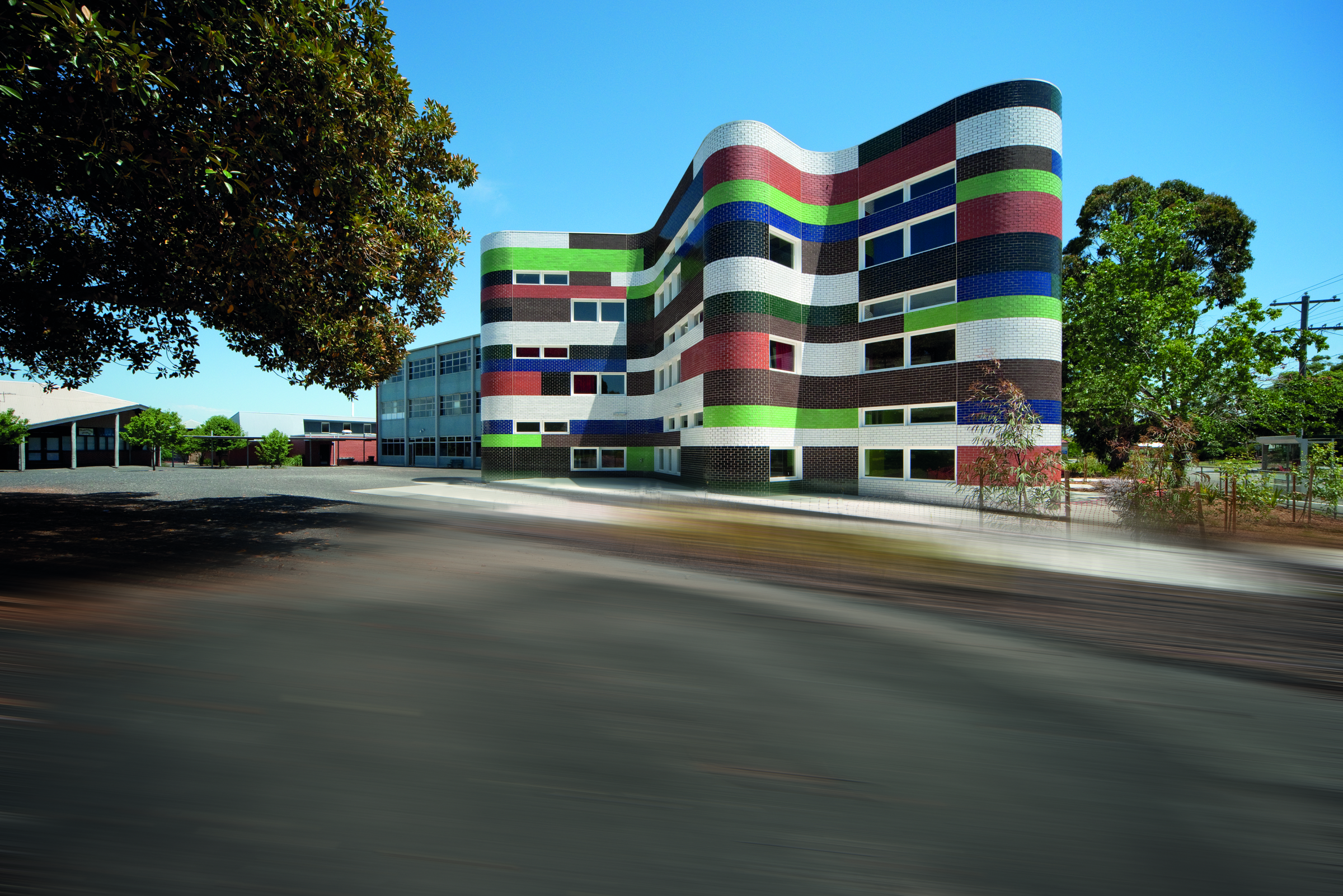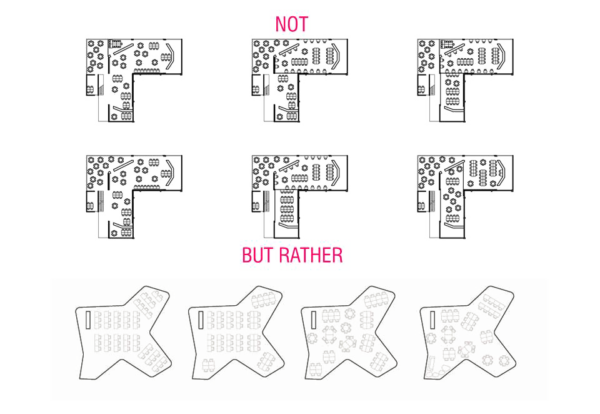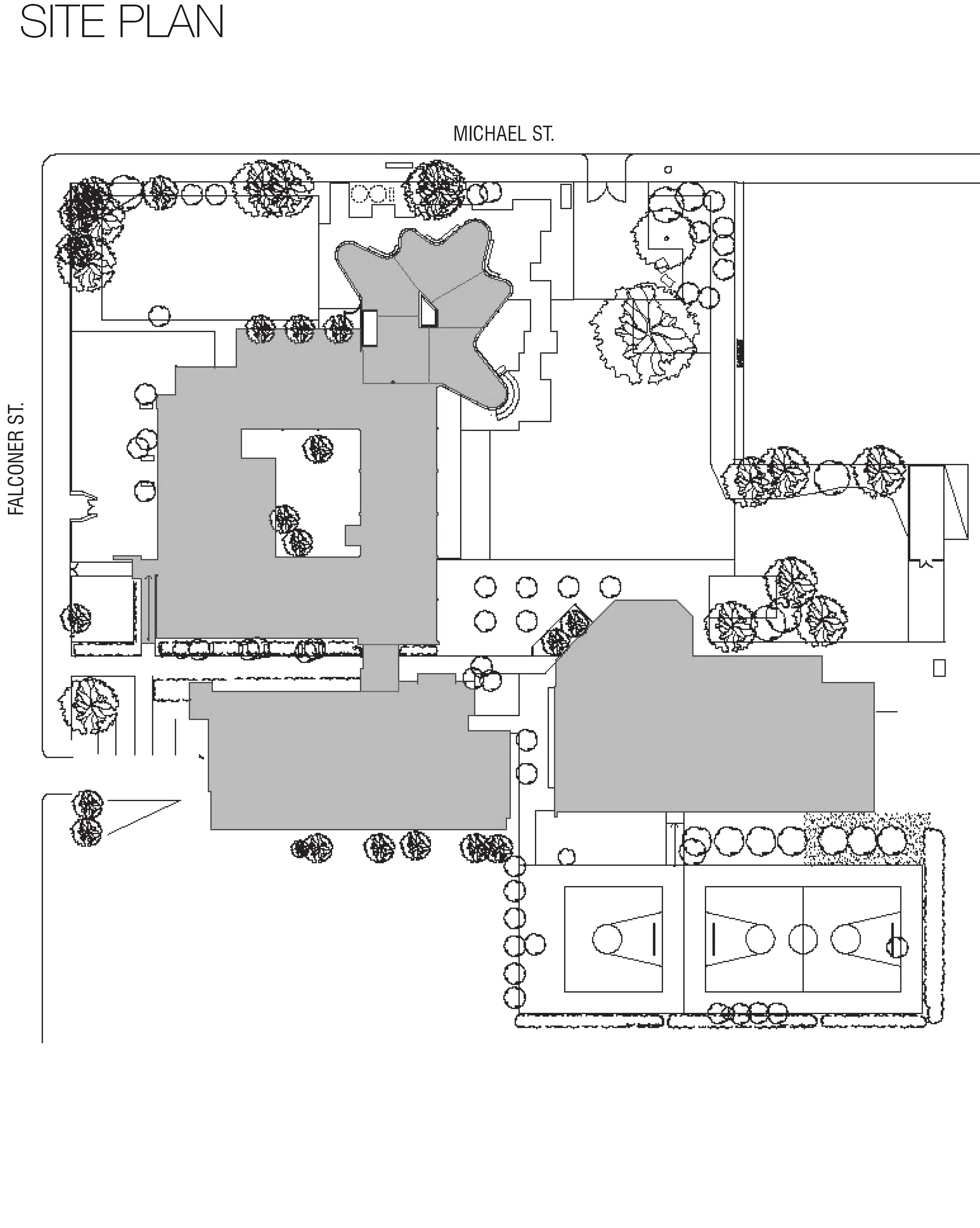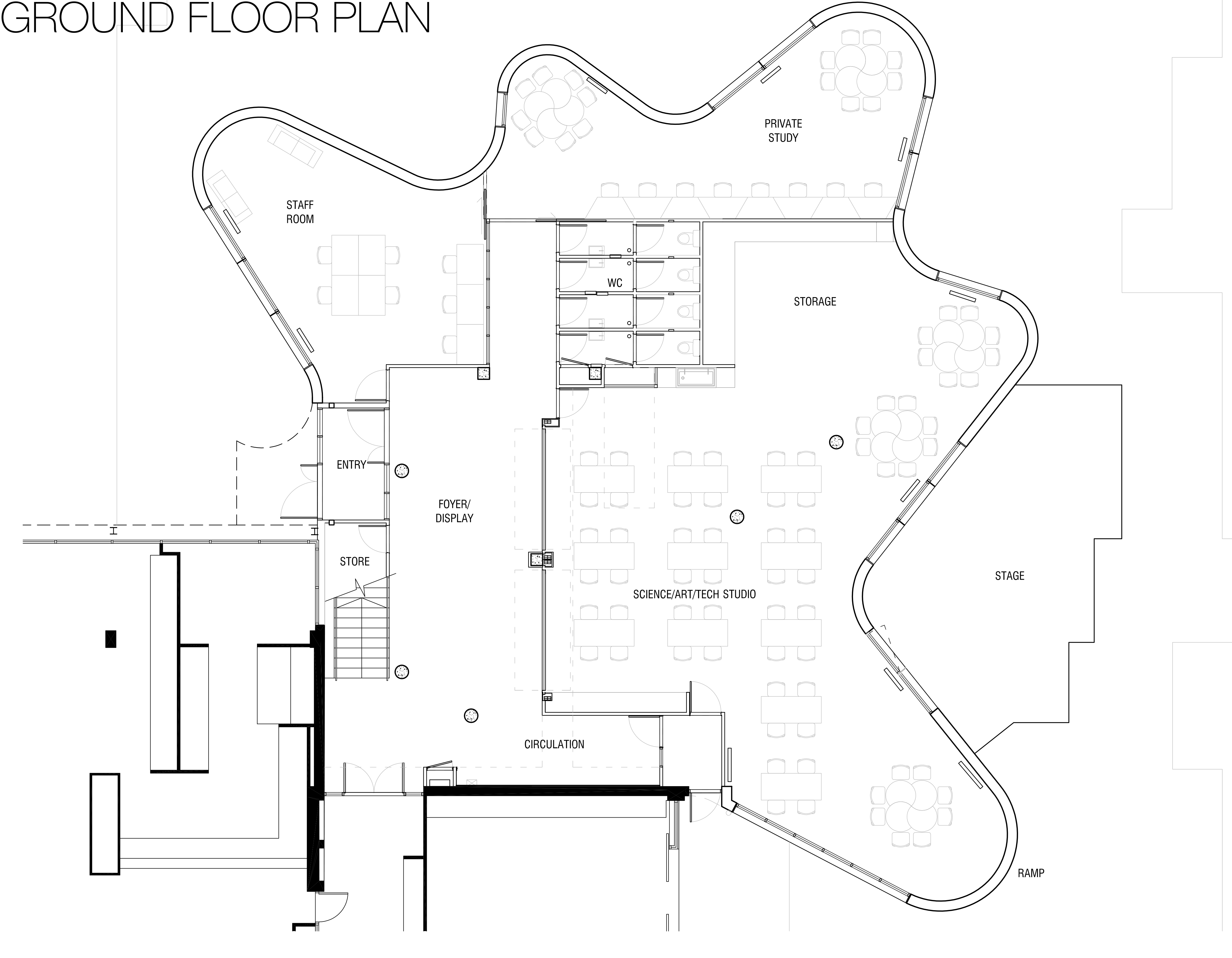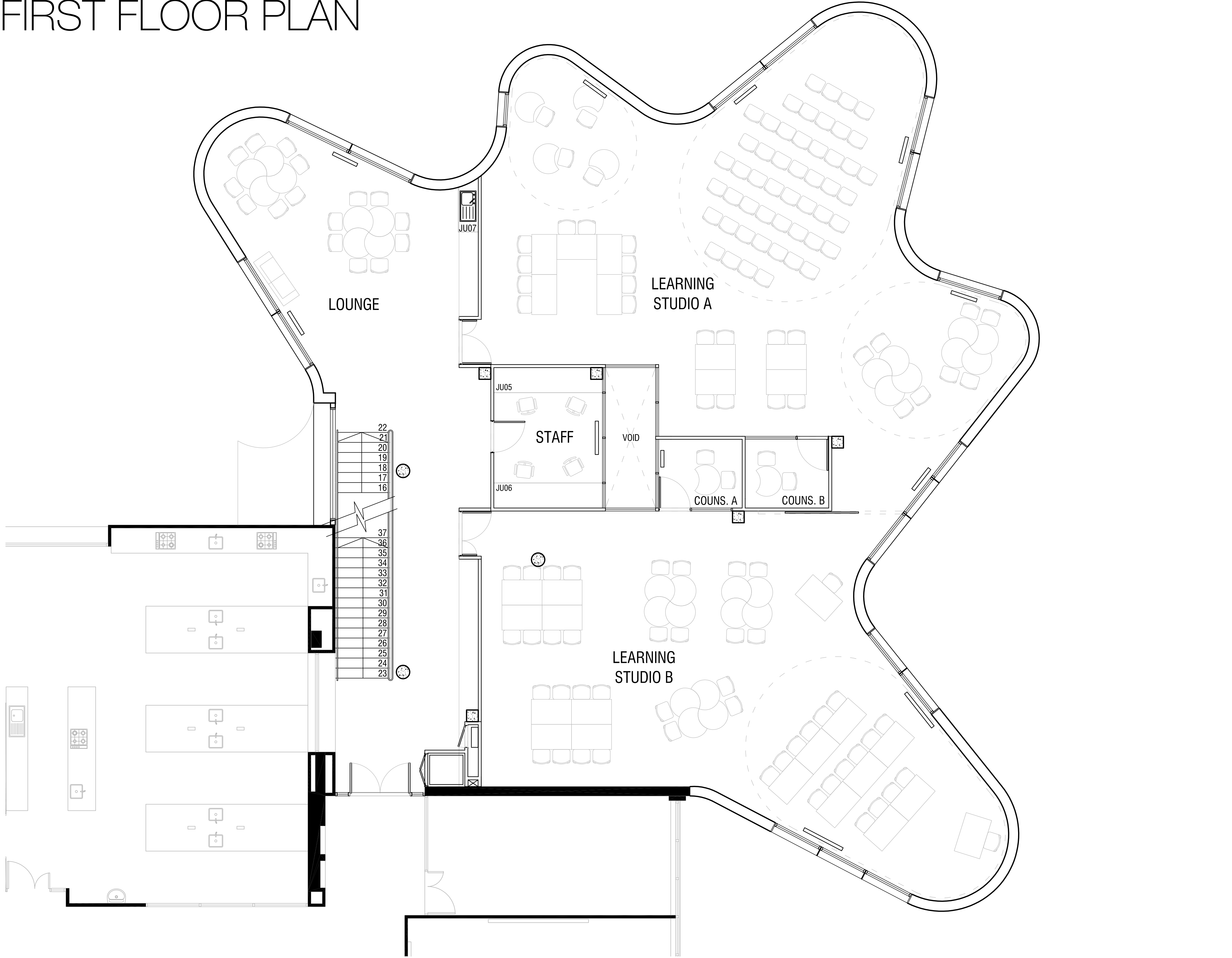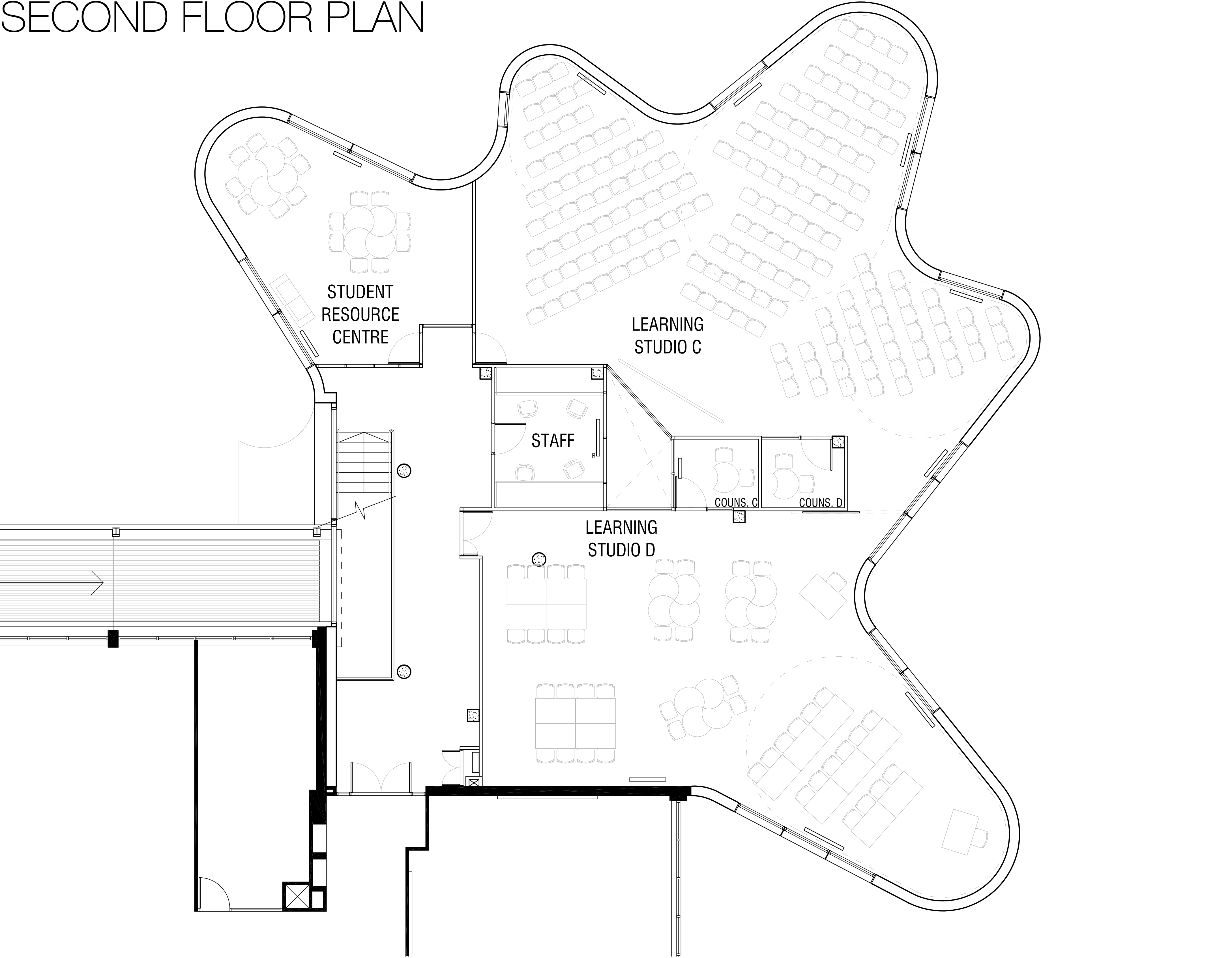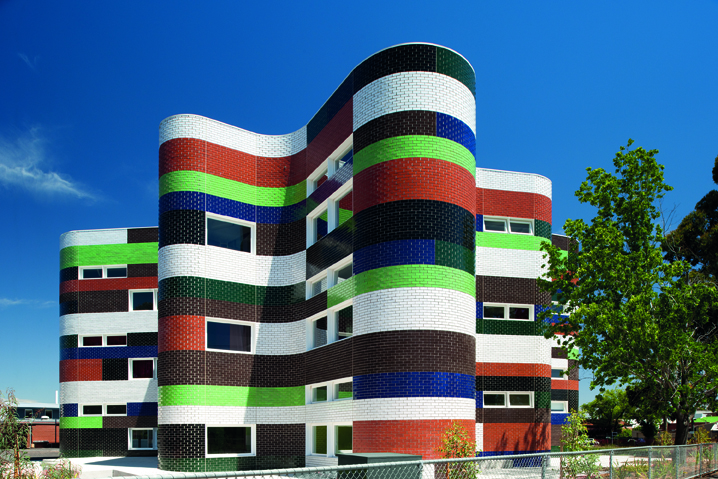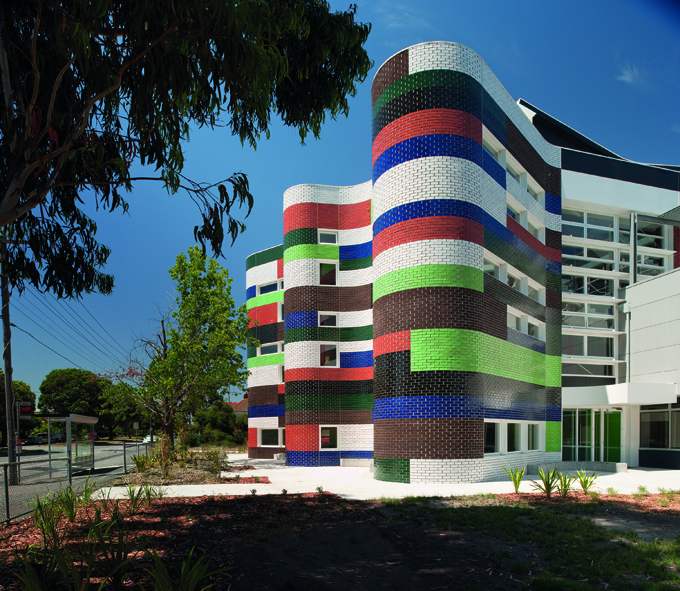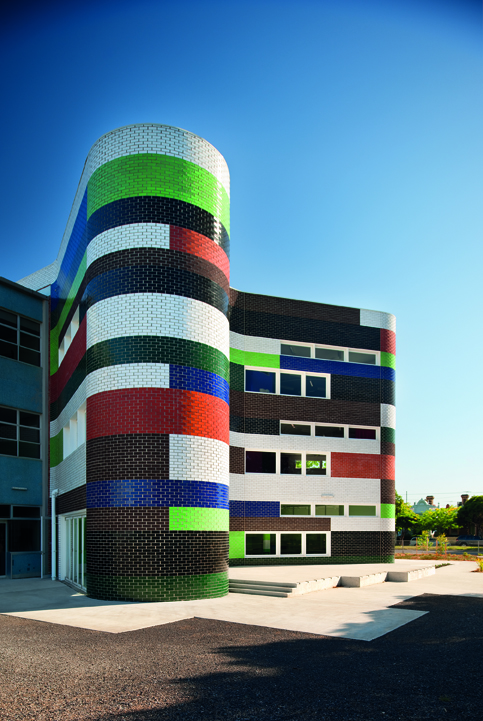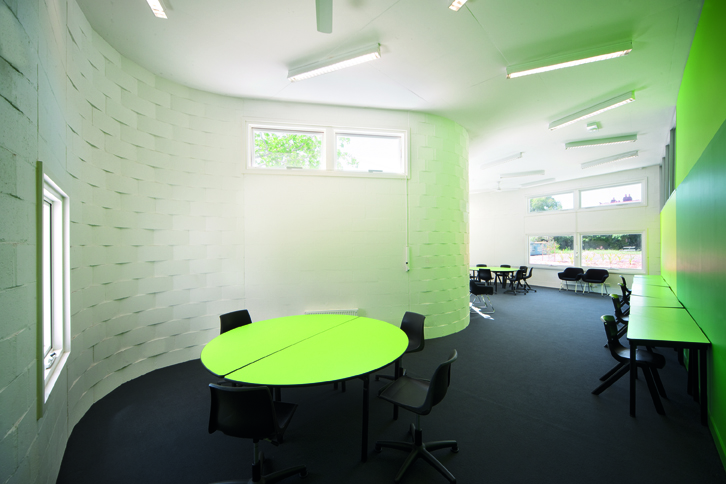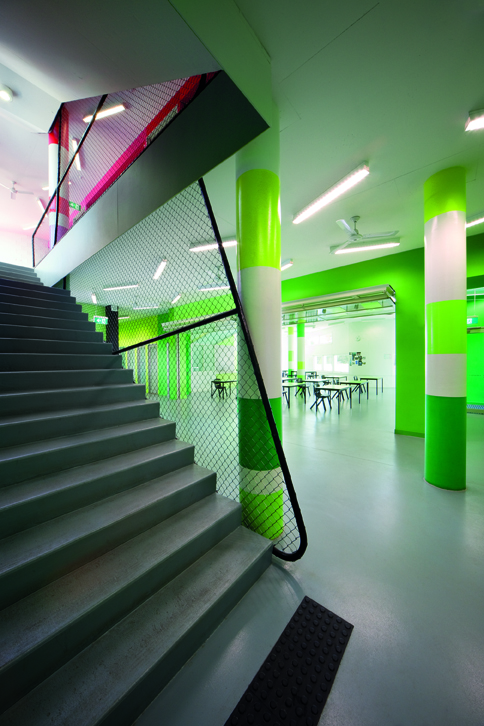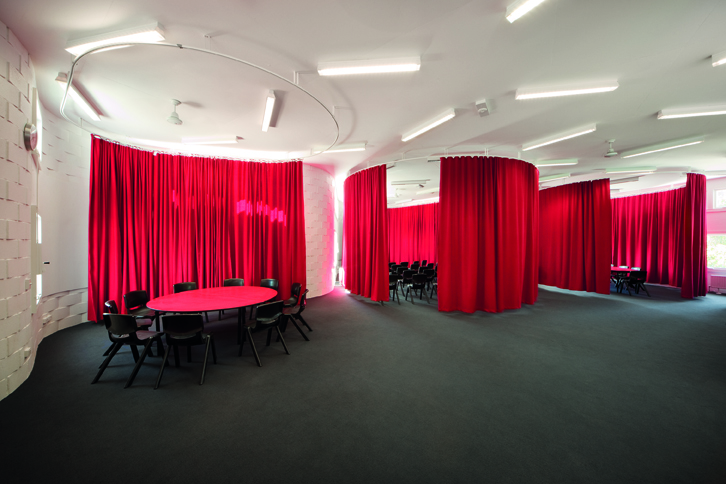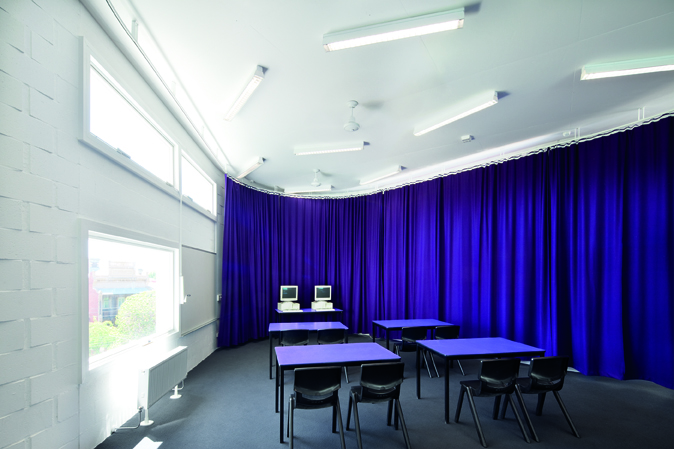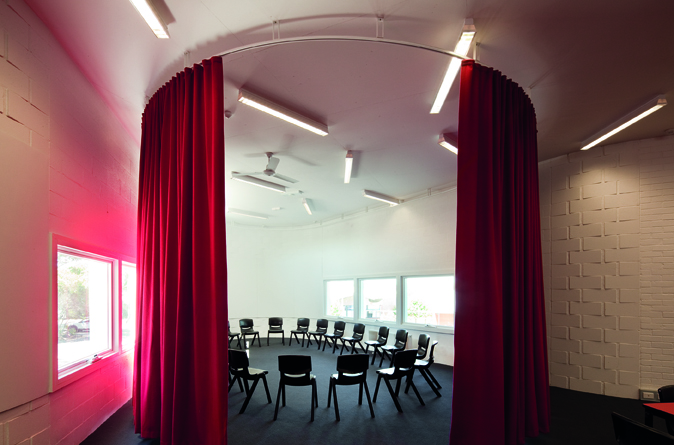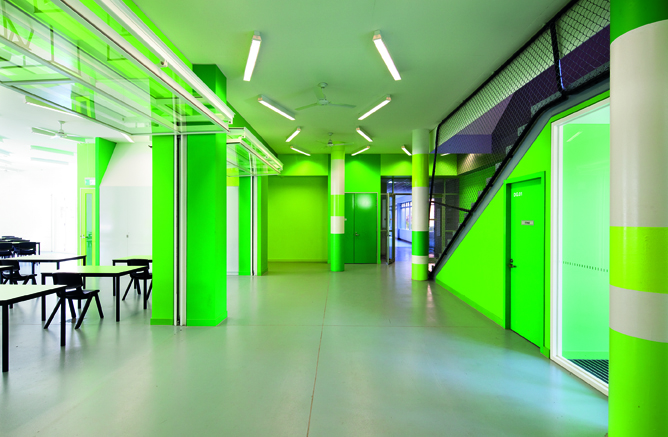The senior school addition to Fitzroy High School is located in inner urban Melbourne. A government school, closed in 1992 then subsequently reopened in 2004, the expansion to include years 11 and 12 gave the school community an opportunity to cement its reputation as a state leader in the implementation of progressive education for design.
The school is formed from a collage of buildings dating back almost 100 years, exhibiting a highly diverse range of styles. The school community had the stated aim for the new senior school to reflect a ‘new school model’, simultaneously accommodating and expressing the requirements and aspirations of a 21st century school.
The new facility accommodates the additional 225 students and 12 staff across three levels, and interfaces directly with the existing 1960s courtyard building to the west. The ground floor studio has been designed to open up to a generous foyer, providing a space for community gatherings that is otherwise not available in this neighbourhood. The key studio spaces are for 40-60 students and follow a ‘team teaching’ approach where spaces are configured allowing a flexibility and variety of use.
